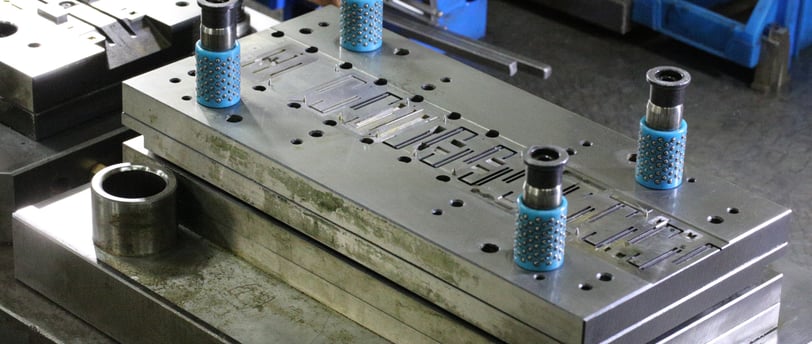Innovative Design: How to Optimize Product Quality Through Molds
1/30/2025


Understanding the Role of Molds in Product Quality
Molds play a critical role in the manufacturing process, serving as the blueprints from which various products are forged. Their design and quality directly impact the attributes of the finished product, influencing not only its performance but also its aesthetic appeal. The importance of molds extends across multiple industries, including automotive, consumer goods, and medical devices, underscoring their versatility and foundational role in product development.
Various types of molds exist, each tailored to specific application requirements. Injection molds, for instance, facilitate the mass production of plastic products, while blow molds are instrumental in shaping hollow objects such as bottles. Other types include compression molds and rotational molds, which cater to different materials and manufacturing techniques. Regardless of the type, mold design must be executed with precision to ensure consistent and high-quality outputs, revealing the inherent connection between mold quality and product excellence.
The materials selected for mold production significantly influence their durability and functionality. Steel molds are renowned for their longevity and ability to withstand the rigors of high-volume production, while aluminum molds offer advantages in lighter applications and quicker turnaround times. Each material choice carries implications for the mold's performance, reflecting the underlying principle that attention to detail in mold design is paramount.
Additionally, the caliber of a mold ultimately dictates the product's performance characteristics and visual appeal. For example, molds that are meticulously crafted will yield parts with tighter tolerances and smoother finishes, enhancing the final product's functionality and overall customer satisfaction. Companies that prioritize the excellence of their molds often experience a ripple effect, wherein superior mold quality contributes to improved product reliability and brand reputation. Thus, understanding the role of molds in the production process is essential for any organization aiming to optimize product quality and maintain competitive advantage in their respective markets.
Key Factors in Mold Design for Optimal Performance
The design of molds is crucial for enhancing product quality in the manufacturing process. A comprehensive understanding of various factors can greatly influence both the final product and the efficiency of production. One such factor is the geometry of the mold. Proper mold geometry ensures that products are produced with the desired dimensions and surface finish. This includes considerations for wall thickness, draft angles, and the overall shape, which can also affect material flow and cooling rates during production.
Another significant element is the choice of materials used in mold construction. The selected material should possess the necessary strength, thermal conductivity, and resistance to wear and corrosion. Common materials include steel, aluminum, and specialized alloys, each offering unique properties. The proper selection mitigates issues such as deformation and thermal expansion, directly impacting product quality and consistency.
Thermal management is also a critical aspect that needs to be addressed in mold design. Effective temperature control ensures that the injected material solidifies appropriately, avoiding defects such as warpage or surface blemishes. The implementation of cooling channels within the mold design facilitates uniform temperature distribution, leading to improved product quality and faster cycle times.
Additionally, the importance of proper venting and gating systems cannot be overstated. Venting allows displaced air to escape during injection, reducing the likelihood of trapped air pockets that can compromise the product's integrity. Similarly, an efficient gating system ensures optimal material flow into the mold cavity, minimizing the risk of defects associated with incomplete filling or flow disruptions.
Real-world case studies demonstrate the significant impact of these mold design factors. For example, a manufacturer that optimized their mold geometry and thermal management reported a 20% reduction in defects, highlighting how targeted improvements can enhance production quality. By carefully considering each of these elements, manufacturers can achieve optimal mold performance that translates into superior product quality.
Innovative Technologies in Mold Manufacturing
The rapid evolution of manufacturing technologies has significantly transformed the mold-making process, leading to substantial improvements in product quality. Key advancements such as 3D printing, CNC machining, and advanced simulation software are at the forefront of this transformation. These innovative technologies not only expedite the manufacturing workflow but also enhance precision and flexibility in mold design, thus fostering superior products.
3D printing has emerged as a game changer in mold manufacturing. Traditionally, mold creation involved lengthy processes that required significant material and labor. However, with the introduction of additive manufacturing, complex molds can now be produced layer by layer. This technique allows for the creation of intricate designs that were previously unfeasible with conventional methods. Furthermore, 3D printing facilitates rapid prototyping, enabling designers to iterate quickly, test concepts, and improve designs based on real-time feedback.
CNC machining remains a cornerstone technology in precision mold manufacturing. Utilized for cutting and shaping materials with high accuracy, CNC machining enables mold makers to produce intricate details and tight tolerances essential for high-quality outputs. The ability to automate these processes reduces human error and enhances repeatability, making it an essential part of the modern tooling and manufacturing landscape. As a result, products can be manufactured with uniform quality across batches, increasing overall customer satisfaction.
Another significant advancement is the use of advanced simulation software, which allows engineers to visualize and analyze mold designs before physical production begins. This technology enables the identification of potential issues, such as weak points or flow inefficiencies, facilitating necessary adjustments during the design phase. Consequently, this proactive approach not only mitigates the risk of production errors but also optimizes the material usage and overall production cost.
Best Practices for Continuous Improvement in Mold Quality
In the realm of manufacturing, ensuring high mold quality is paramount for the production of superior products. To facilitate continuous improvement in mold quality, companies can implement several best practices that not only enhance product outcomes but also promote a culture of innovation within their organizations.
First and foremost, establishing comprehensive quality control measures is essential. Regular inspections and testing throughout the mold production process can help identify and rectify potential issues before they escalate. Utilizing tools such as Statistical Process Control (SPC) can facilitate real-time monitoring of mold quality and variability, empowering teams to make informed decisions. Additionally, documenting and analyzing defects can provide insights to develop targeted strategies for quality enhancement.
Adopting lean manufacturing principles is another effective strategy for improving mold quality. By minimizing waste, optimizing processes, and increasing efficiency, organizations can ensure that their mold production aligns with quality benchmarks. Techniques such as Value Stream Mapping can help visualize workflows and pinpoint areas where improvements can be made to enhance mold production outcomes.
Furthermore, investing in staff training is crucial. Employees should be equipped with the latest knowledge and skills pertinent to mold technologies and quality improvements. Regular training sessions and workshops can not only boost employee morale but also foster a workforce that is committed to excellence. Encouraging feedback and innovative ideas from team members can yield valuable insights, solidifying a proactive approach to quality enhancement.
Collaboration with mold makers and industry partners is equally vital. Staying abreast of advances in mold technology and best practices can enable companies to remain competitive in an evolving marketplace. Establishing strong relationships with these partners facilitates knowledge exchange, ensuring access to the latest innovations and possibilities in mold quality improvement.
By integrating these best practices into their operations, companies can significantly enhance their mold quality, ultimately contributing to the overall excellence of their product lines.
